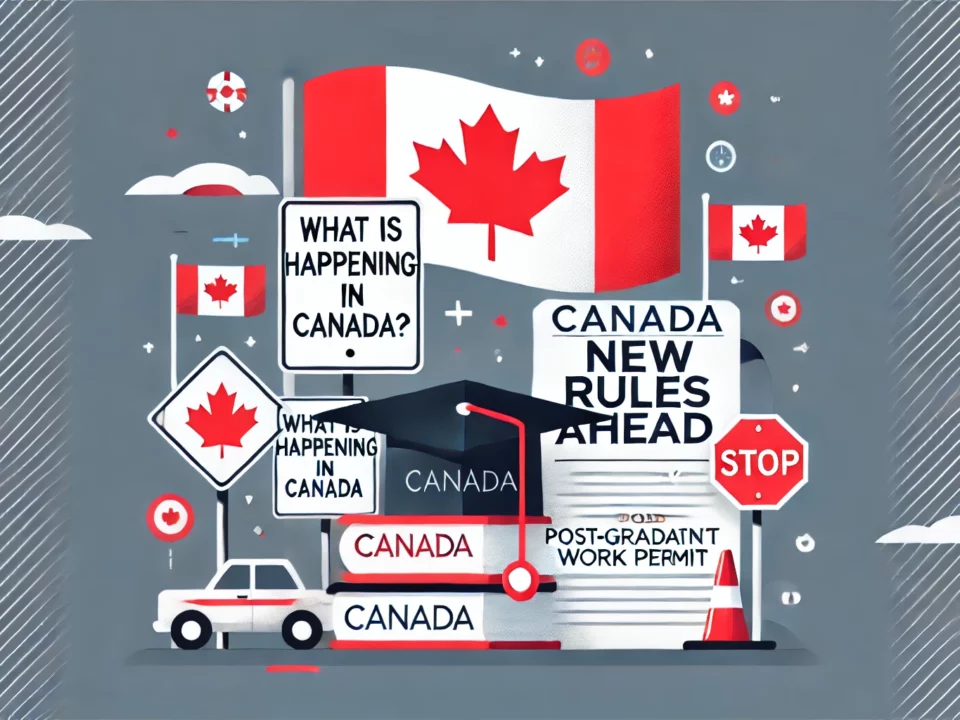Canada Visa SDS Vs. NON-SDS
It is possible to become confused between terms such as SDS and Non-SDS when applying for a visa for study in Canada. SDS stands for Student Direct Stream. Prior to SDS, this program was called Students Partner Program and it is open to certain countries like India, Brazil, etc. Meanwhile, Non-SDS is a general visa application process for temporary residence in Canada for work, study, and immigration purposes. It is open to all international travelers regardless of their country of origin.
What is SDS?
Students Partner Program (SPP) was formerly known as Student Direct Stream (SDS). The program was launched by Canadian Immigration Services. With the SDS approach, student visa applications are processed quickly and directly. Applicants must, however, submit their student visa applications online. As part of the SDS program, students must also meet certain requirements set by Immigration Refugees Citizenship Canada.
What is Non-SDS?
The Non-SDS category is a general category for students who wish to study in Canada. Candidates who are not able to meet the SDS requirements can still apply under this approach. The requirements will differ as well, such as the need for additional documents.
Visa Document Requirements for SDS
- Transcripts of academic history, including the 12th grade mark sheet. A minimum mark of 55% is required for undergraduate courses.
- Undergraduate degree or advanced diploma. To pursue postgraduate studies, applicants must have a minimum of 50%.
- Statement of Purpose
- A minimum score of 6.0 on the IELTS is required for UG and an overall score of 6.5 for PG.
- SDS colleges’ offer letters.
- A GIC of $10,000 (INR 7.4 lakhs) to cover living costs.
- Digital Photographs
- Proof of previous work experience
- Receipt of tuition fees
- Proof of necessary medical tests
- Visa application fees of $150 (INR 11k approx)
Non-SDS Document Requirements for Visa Application
- Transcripts of academic records, including the mark sheet for the 12th grade. A minimum of 55% aggregate mark for undergraduate courses is required.
- Undergraduate degree or advanced diploma. To pursue postgraduate studies, applicants must have a minimum of 50%.
- A minimum score of 6.0 on the IELTS is required for UG and an overall score of 6.5 for PG.
- Non-SDS colleges’ offer letter.
- Payslips for the last three months and proof of previous employment.
- Evidence of financial resources, including bank savings, student loans, and investments.
- A copy of the candidate’s income tax return or a copy of the sponsor’s form 16
- Receipt of tuition fees
- Proof of necessary medical tests
- Visa application fees of $150 (INR 11k approx)
Why should I choose SDS over non-SDS?
Now that you know the differences between SDS and Non-SDS, here are the main reasons why applying through SDS is better than applying through Non-SDS.
- SDS candidates don’t have to submit many documents to demonstrate financial eligibility for the program. As opposed to the Non-SDS approach, there are more documents.
- Comparing SDS with Non-SDS, SDS approach is fast and simple. The entire process takes approximately 45 days.
How to Apply for SDS
Applying online will expedite the processing of your study permit. No paper applications are needed in the Student Direct Stream. Align all of your documentation before applying. Check this list:
- The application form instruction guide
- Make digital copies of your supporting documents with a scanner or camera
- A valid credit/debit card is required to make the payment
- Please provide your biometric information. Simply visit the official website, answer the questions, and submit the biometric fee.
Application Process for Non-SDS
- Sign in with your GCKey ID and password at the official website of CIC Canada. Accept all terms and conditions and complete the identification validation.
- Enter the personal reference code in step 2 of your application. Find out if you are eligible by answering some questions and applying online if you don’t have the code. When you’re done, save your answers and exit the form.
- If you are eligible, a pop-up will appear after you have answered all the questions. Click on the next step if you qualify.
- Review your responses!
- Review your personal checklists and documents. If you have forgotten anything, add it to your list.
- Submit the application.



